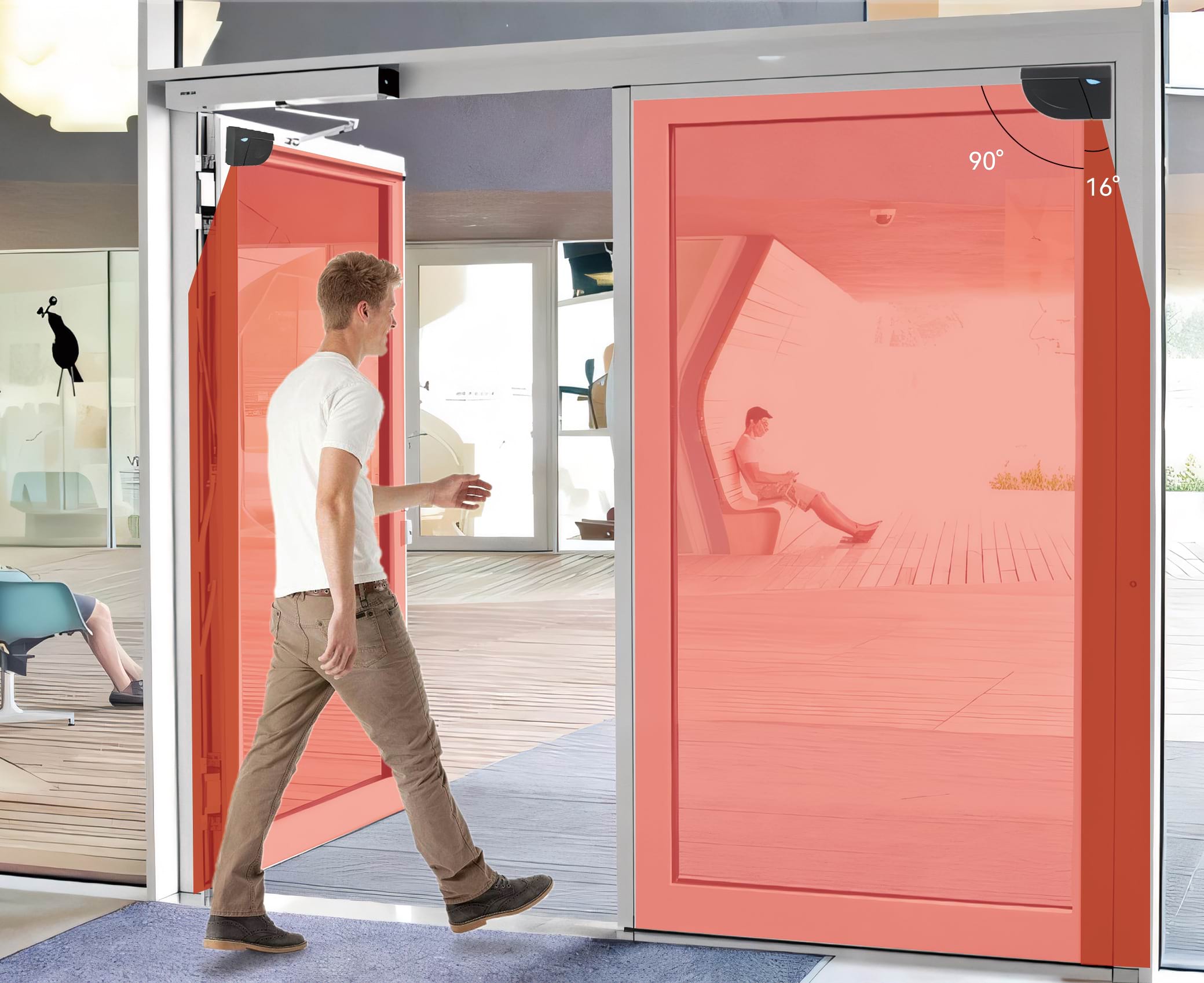What is the Range of Detection for a Typical Laser Sensor on a Swing Door?
Laser sensors are widely used in automatic swing doors to detect movement and ensure safety. They work by emitting laser beams that detect objects or people within a defined area, signaling the door to open or stop if an obstruction is detected. Understanding the range of detection for a laser sensor on a swing door is important for selecting the right sensor and ensuring safe, reliable operation.

1. Typical Range of Detection for Swing Door Laser Sensors
The detection range for laser sensors on swing doors typically varies based on sensor type, installation settings, and environmental factors. Here’s a general overview:
- Short-Range Detection: Common for indoor use, with a range of 3 to 10 feet. This range is suitable for areas with high foot traffic where quick response times are needed to detect people close to the door.
- Mid-Range Detection: Generally spans 10 to 16 feet. This range is effective in commercial buildings, offices, or retail settings where the sensor needs to detect people or objects slightly further away to prepare the door to open.
- Long-Range Detection: Up to 20-30 feet, although this is less common and mainly used for specific applications where early detection is necessary, such as high-speed or industrial doors.
Most swing door laser sensors fall within the short-to-mid range, which provides an effective balance between timely activation and safety.
2. Factors Influencing Detection Range
A. Sensor Type and Specifications
- Different laser sensors have unique ranges based on their design and intended use. Premium sensors may offer adjustable ranges, allowing users to set the desired detection distance based on the environment.
B. Installation Height and Angle
- The height and angle at which the sensor is installed affect its detection range. For example, a sensor installed at a higher position with a downward angle can extend its range, covering more area.
C. Environmental Conditions
- External factors like lighting, reflective surfaces, or temperature fluctuations can influence laser sensor performance. For example, reflective flooring or glass surfaces might disrupt the sensor’s effective range, while fog or dust can reduce it.
D. Door Speed and Application Requirements
- Faster-moving swing doors may require sensors with quicker response times and slightly extended detection ranges. In high-traffic areas, sensors often have a shorter range to prevent premature activation or unnecessary openings.
3. How Laser Sensors Detect and Enhance Safety on Swing Doors
Laser sensors create a protective detection zone around swing doors, helping to prevent accidents by stopping the door if an obstruction is detected within range. In addition to detecting people or objects, many sensors have sensitivity adjustments to differentiate between objects of different sizes or movement speeds, reducing false triggers while maintaining safety.
4. Popular Applications for Laser Sensors on Swing Doors
Laser sensors are commonly found in:
- Retail and Commercial Buildings: High-traffic entrances require short to mid-range sensors to quickly detect foot traffic.
- Hospitals and Healthcare Facilities: Often use sensors with mid-range detection to allow safe, hands-free access for staff and patients.
- Industrial Facilities: Might require extended-range sensors to detect moving equipment or larger objects, ensuring safety for personnel.
5. Choosing the Right Detection Range for Your Needs
When choosing a laser sensor for a swing door, it’s important to consider:
- Foot Traffic Volume: Higher traffic areas benefit from short-range sensors to detect close movement and prevent delays.
- Environmental Obstacles: Consider any potential reflective surfaces or environmental factors that might affect the sensor’s range.
- Door Type and Speed: Faster doors or larger swing doors might require a slightly longer detection range to allow for safe, timely activation.
Conclusion
The range of detection for a typical laser sensor on a swing door generally falls between 3 and 16 feet, depending on the environment and requirements. Understanding these ranges and the factors affecting them can help ensure that the sensor meets both functional and safety needs, providing a reliable and user-friendly experience in various settings.







